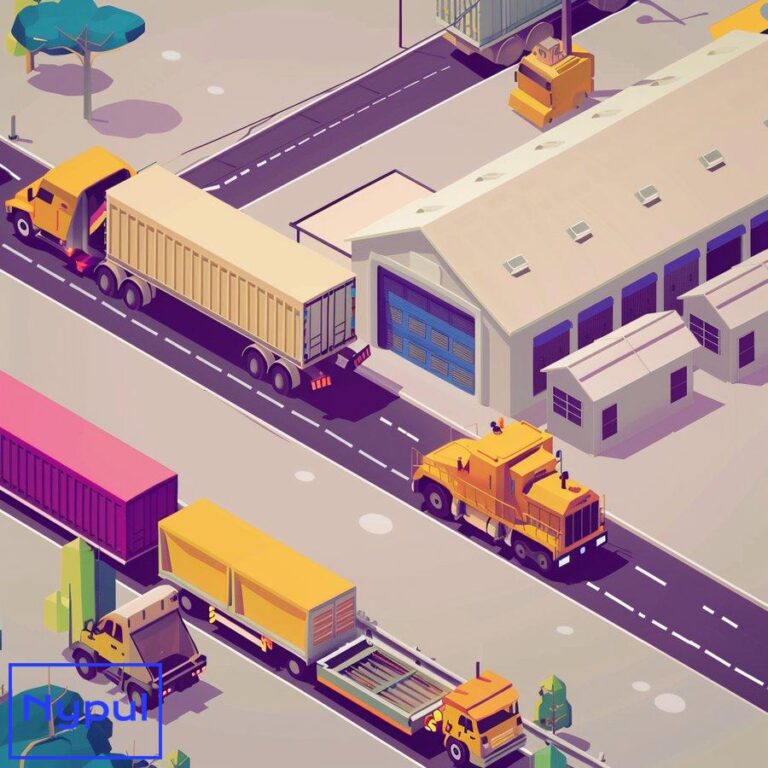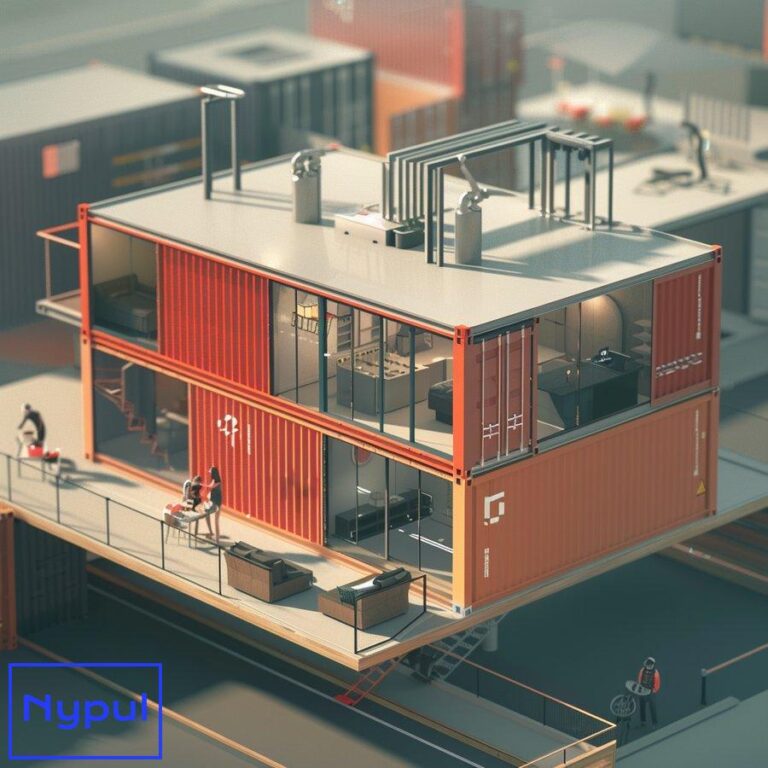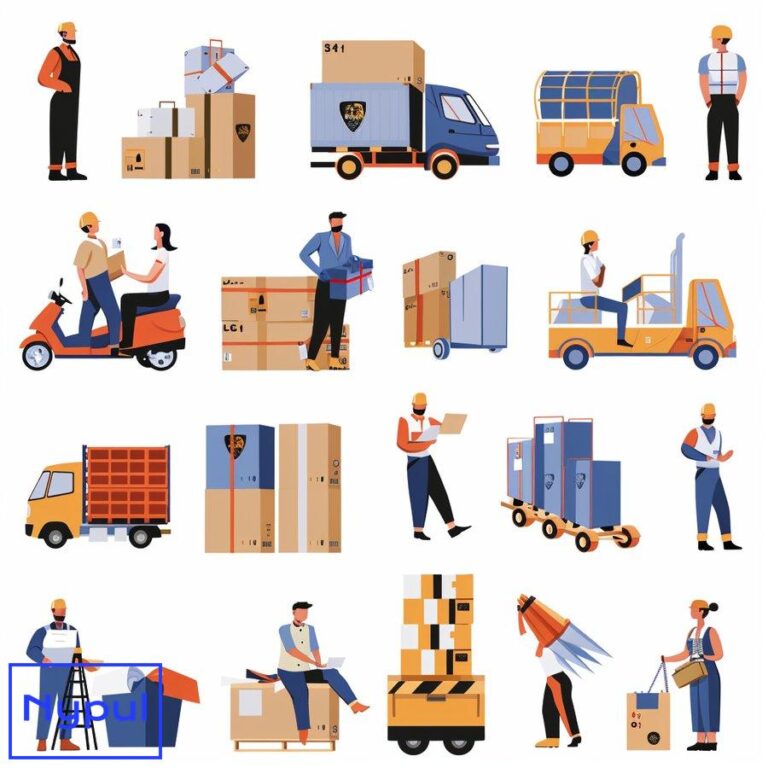How Do Trucks Pick Up Shipping Containers
What types of trucks are used for container pickup?
When it comes to the logistics of transporting shipping containers, the type of truck utilized plays a significant role in the efficiency and safety of the operation. Various truck types are specifically designed to handle the weight and dimensions of containers, ensuring that they can be transported securely from ports to their final destinations.
* *Chassis Trucks

Chassis trucks are the most common vehicles used for container pickup. These trucks consist of a flatbed chassis that can accommodate standard shipping containers, typically 20 or 40 feet in length. The chassis is equipped with twist locks that secure the container during transit.
* *Flatbed Trucks
Flatbed trucks are another option for transporting containers, particularly when the container needs to be loaded or unloaded from the side. These trucks offer flexibility in loading and unloading, making them suitable for various cargo types. However, they require additional securing mechanisms to ensure the container remains stable during transport.
* *Semi-Trailers
Semi-trailers are often used in conjunction with tractor units. These trucks can handle multiple containers at once, making them efficient for larger shipping operations. The semi-trailer design allows for easy attachment and detachment, facilitating quick loading and unloading processes.
* *Specialized Container Trucks
Some logistics companies utilize specialized container trucks designed for specific types of cargo. These trucks may include features such as reinforced frames, additional suspension systems, or unique loading mechanisms to accommodate specific container types or weights.
In summary, the choice of truck for container pickup is influenced by factors such as container size, weight, and the nature of the cargo being transported. Understanding the different types of trucks available can help logistics companies optimize their operations and ensure safe transport.
How does the container pickup process work?
The container pickup process is a critical component of the logistics chain, involving several steps that ensure containers are transported efficiently and securely. This process can be broken down into distinct phases:
* *Preparation for Pickup
Before the pickup can occur, logistics companies must coordinate with shipping lines, port authorities, and customers to determine the pickup schedule and location. This preparation includes:
-
Scheduling: Aligning pickup times with port operations and customer availability.
-
Documentation: Ensuring all necessary paperwork is ready, including bills of lading and customs documentation.
-
Equipment Check: Verifying that the truck and any necessary equipment are in good working condition.
* *Arrival at the Port
Upon arriving at the port, the truck driver must navigate through security and check-in procedures. This involves:
-
Identification: Presenting necessary identification and documentation to port authorities.
-
Container Location: Determining the specific location of the container within the port yard.
-
Waiting for Clearance: Sometimes, drivers may need to wait for clearance or instructions from port personnel.
* *Container Retrieval
Once cleared, the driver proceeds to retrieve the container. This phase includes:
-
Using Equipment: Employing cranes or reach stackers to lift the container from the stacking area.
-
Securing the Container: After lifting, the container is positioned onto the truck chassis, where it is secured using twist locks.
-
Final Checks: Conducting a final inspection to ensure the container is properly secured and all documentation is in order.
* *Departure from the Port
After securing the container, the driver can depart the port. This stage involves:
-
Navigating Traffic: Managing traffic and road conditions as the truck leaves the port area.
-
Communicating with Dispatch: Keeping in touch with dispatch to provide updates on the pickup and any potential delays.
-
Following Regulations: Adhering to local regulations regarding weight limits and transport routes.
The entire container pickup process is a well-coordinated effort that requires effective communication and planning among various stakeholders to ensure timely and safe delivery.
What equipment and tools are involved in container pickup?
The equipment and tools used in container pickup are essential for ensuring the safe and efficient handling of shipping containers. Each piece of equipment plays a specific role in the overall process, contributing to the successful transport of cargo.
* *Trucks and Trailers
As previously mentioned, trucks are the primary vehicles used for container pickup. The choice of truck type—such as chassis trucks, flatbed trucks, or semi-trailers—depends on the specific needs of the operation.
* *Cranes and Reach Stackers
Cranes and reach stackers are vital for lifting containers from their storage locations at the port.
-
Cranes: These are typically used for heavy lifting and can handle multiple containers stacked high. They provide the necessary reach and power to lift containers safely.
-
Reach Stackers: These are specialized vehicles that can maneuver in tight spaces and lift containers to various heights. They are particularly useful in container yards where space is limited.
* *Twist Locks and Securing Equipment
Twist locks are essential for securing containers to the truck chassis.
-
Twist Locks: These devices lock into the corners of the container, preventing it from shifting during transport.
-
Straps and Chains: Additional securing methods may be used, such as straps or chains, to provide extra stability, especially when transporting oversized or heavy containers.
* *Forklifts and Hand Trucks
Forklifts and hand trucks are often used in the loading and unloading processes.
-
Forklifts: These are utilized to move containers short distances within the yard or warehouse, making them essential for efficient operations.
-
Hand Trucks: Smaller hand trucks may be used for transporting smaller cargo items that accompany the containers.
The combination of these tools and equipment ensures that container pickup operations are conducted safely, efficiently, and in compliance with industry standards.
How are containers loaded onto different truck types?
Loading containers onto trucks requires careful planning and execution to ensure safety and efficiency. The method of loading can vary based on the type of truck being used and the specific requirements of the cargo.

* *Chassis Trucks
Loading containers onto chassis trucks is a straightforward process.
-
Positioning: The chassis truck is positioned beneath the container, often with the help of a crane or reach stacker.
-
Lifting: The container is lifted and aligned with the chassis.
-
Securing: Once in place, twist locks are engaged to secure the container firmly to the chassis.
* *Flatbed Trucks
Loading onto flatbed trucks involves additional considerations due to the open design of the bed.
-
Side Loading: Containers may be loaded from the side using cranes or forklifts, which requires careful maneuvering to ensure stability.
-
Securing: Straps or chains must be used to secure the container, as flatbeds do not have built-in locking mechanisms like chassis trucks.
* *Semi-Trailers
Loading containers onto semi-trailers is similar to chassis trucks but may involve multiple containers.
-
Multiple Containers: Semi-trailers can often carry two or more containers, requiring precise alignment during loading.
-
Securing: Each container must be individually secured using twist locks and additional securing methods as needed.
The loading process must be executed with attention to detail to prevent accidents and ensure the safe transport of containers.
What safety considerations are crucial during container pickup?
Safety is paramount during container pickup operations, as the handling of heavy shipping containers poses various risks. Addressing these safety considerations helps protect workers, equipment, and the cargo itself.

* *Personal Protective Equipment (PPE)
Workers involved in container pickup must wear appropriate personal protective equipment to minimize risks.
-
Hard Hats: Protect against head injuries from falling objects.
-
High-Visibility Vests: Ensure workers are visible in busy port environments.
-
Steel-Toed Boots: Provide foot protection against heavy loads.
* *Equipment Safety Checks
Regular safety checks on equipment are essential to prevent accidents.
-
Inspection Protocols: Trucks, cranes, and other equipment should undergo routine inspections to identify any potential issues.
-
Maintenance: Proper maintenance schedules must be adhered to, ensuring all equipment is functioning correctly.
* *Training and Certification
Training is critical for all personnel involved in container pickup operations.
-
Operator Training: Crane and truck operators must be certified and trained in safe operating procedures.
-
Safety Drills: Regular safety drills should be conducted to prepare workers for emergency situations.
* *Site Safety Protocols
Establishing site-specific safety protocols can help mitigate risks.
-
Traffic Management: Clear signage and designated pathways should be established to manage vehicle and pedestrian traffic.
-
Emergency Procedures: Emergency response plans must be in place and communicated to all workers.
By prioritizing these safety considerations, logistics companies can create a safer working environment and reduce the likelihood of accidents during container pickup operations.
What documentation is required for container pickup?
Documentation is a critical aspect of container pickup operations, ensuring compliance with legal requirements and facilitating smooth transactions between parties. The following documents are typically required:
* *Bill of Lading
The bill of lading is a legal document that serves as a receipt for the cargo and a contract between the shipper and the carrier.
-
Details Included: It includes information such as the type of cargo, weight, and destination.
-
Importance: This document is essential for the release of the container at the port and must be presented to port authorities.
* *Customs Documentation
Customs documentation is necessary for international shipments to ensure compliance with import and export regulations.
-
Customs Declaration: This document provides details about the cargo and its value for customs purposes.
-
Import/Export Permits: Depending on the nature of the cargo, additional permits may be required.
* *Container Release Order
The container release order is issued by the shipping line or freight forwarder, authorizing the pickup of the container.
-
Process: This document must be presented at the port to obtain the container.
-
Verification: Port authorities will verify the release order against the bill of lading before allowing the pickup.
* *Insurance Certificates
Insurance certificates provide proof of coverage for the cargo during transport.
-
Coverage Details: These documents outline the extent of coverage and any exclusions.
-
Importance: Having valid insurance is crucial for protecting against potential losses during transit.
Proper documentation is vital for ensuring that container pickup operations proceed smoothly and comply with all regulatory requirements.
How do drivers navigate challenges in container pickup operations?
Drivers face various challenges during container pickup operations, requiring them to be skilled in navigating both physical and logistical obstacles. Understanding these challenges helps improve operational efficiency and safety.
* *Traffic and Road Conditions
Navigating through busy port areas and urban environments presents significant challenges.
-
Traffic Management: Drivers must be adept at managing traffic congestion and following designated routes to avoid delays.
-
Road Conditions: Adverse weather conditions can impact road safety, requiring drivers to adjust their driving techniques accordingly.
* *Communication with Dispatch
Effective communication with dispatch is essential for successful operations.
-
Real-Time Updates: Drivers must provide real-time updates on their location and any delays encountered.
-
Coordination: Coordinating with dispatch helps ensure that any changes in schedules or routes are communicated promptly.
* *Container Weight and Dimensions
Understanding the weight and dimensions of the containers being transported is critical for safe handling.
-
Weight Limits: Drivers must be aware of weight limits for their trucks and ensure that they do not exceed them.
-
Loading Techniques: Proper loading techniques must be employed to maintain balance and stability during transport.
* *Dealing with Equipment Malfunctions
Equipment malfunctions can pose significant challenges during container pickup.
-
Quick Problem-Solving: Drivers must be prepared to troubleshoot minor issues and communicate with maintenance teams for more significant problems.
-
Emergency Protocols: Knowing emergency protocols for equipment failure can help mitigate risks and ensure safety.
By being aware of these challenges and developing strategies to address them, drivers can enhance their effectiveness and contribute to the overall success of container pickup operations.
Container Pickup Technology and Automation
The logistics industry is increasingly embracing technology and automation to improve container pickup operations. These advancements enhance efficiency, safety, and accuracy in the handling of shipping containers.
![]()
* *Automated Guided Vehicles (AGVs)
Automated Guided Vehicles are becoming more prevalent in container terminals.
-
Functionality: AGVs can transport containers autonomously within the terminal, reducing the need for manual labor.
-
Benefits: They improve efficiency by optimizing transport routes and minimizing human error.
* *Telematics and Fleet Management Systems
Telematics systems provide real-time data on vehicle performance and location.
-
Monitoring: Fleet managers can monitor truck conditions, driver behavior, and route efficiency.
-
Data Analysis: Analyzing this data helps identify areas for improvement and optimize operations.
* *Container Tracking Technology
Container tracking technology allows for real-time monitoring of containers throughout the supply chain.
-
RFID and GPS: Radio-frequency identification (RFID) and GPS technology enable logistics companies to track container locations and status.
-
Customer Transparency: This technology enhances transparency for customers, allowing them to track their shipments in real-time.
* *Robotic Loading Systems
Robotic systems are being developed to automate the loading and unloading of containers.
-
Efficiency: These systems can significantly reduce loading times and improve safety by minimizing human involvement in potentially hazardous tasks.
-
Innovation: As technology advances, the integration of robotics in container pickup operations is expected to grow.
The adoption of technology and automation in container pickup operations is transforming the logistics industry, leading to increased efficiency, safety, and accuracy in the movement of shipping containers.
In conclusion, understanding the intricacies of how trucks pick up shipping containers involves recognizing the various truck types, the detailed pickup process, the equipment used, safety considerations, necessary documentation, the challenges drivers face, and the impact of technology and automation. Each aspect plays a vital role in ensuring that container pickup operations run smoothly and efficiently, ultimately contributing to the success of the logistics industry.





